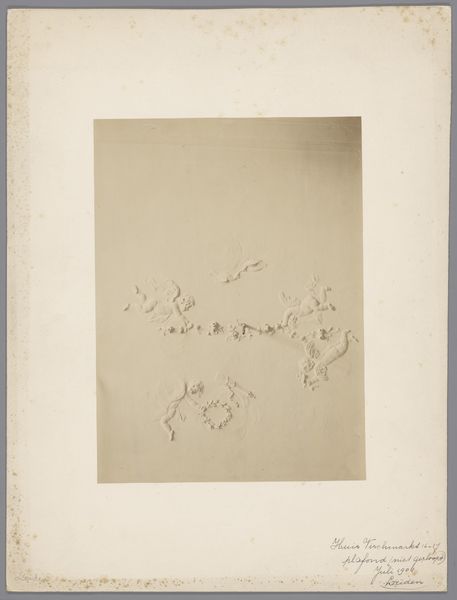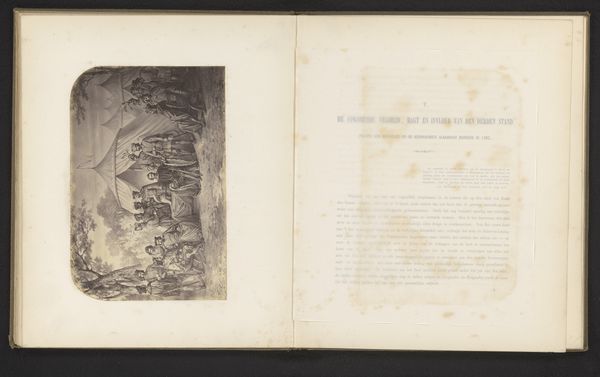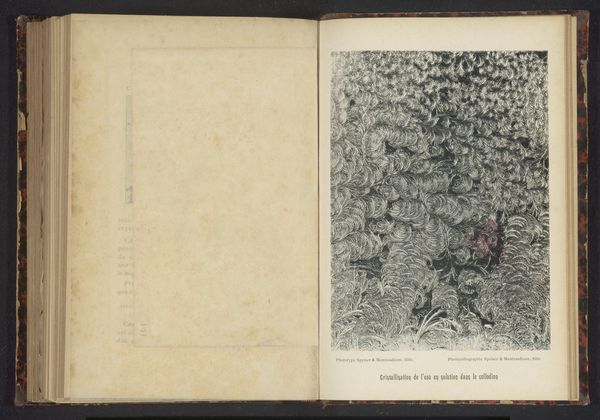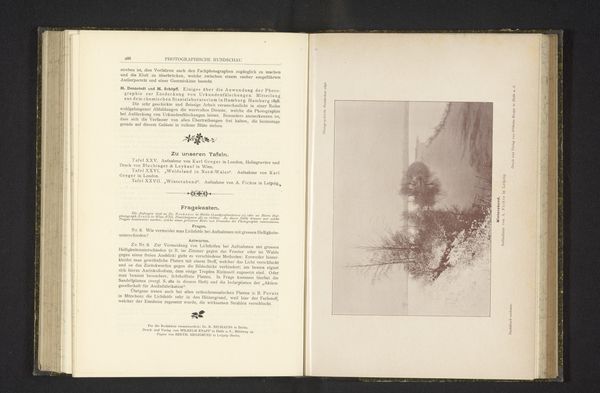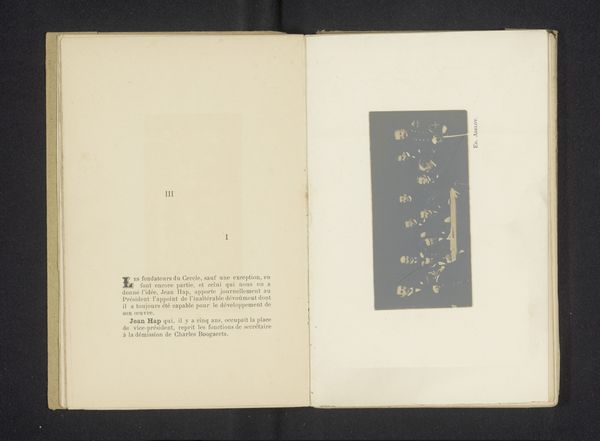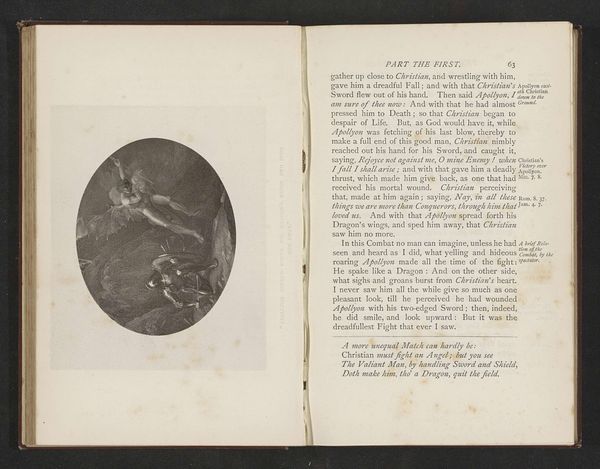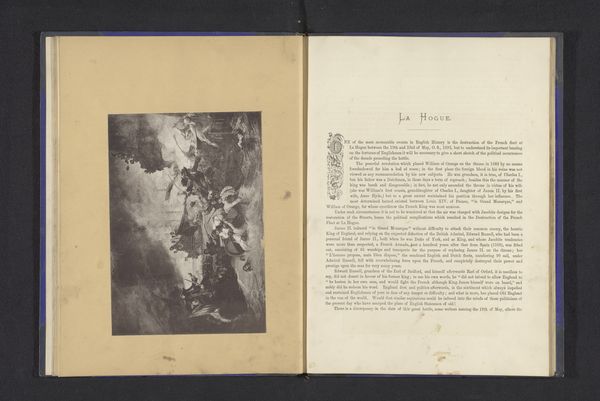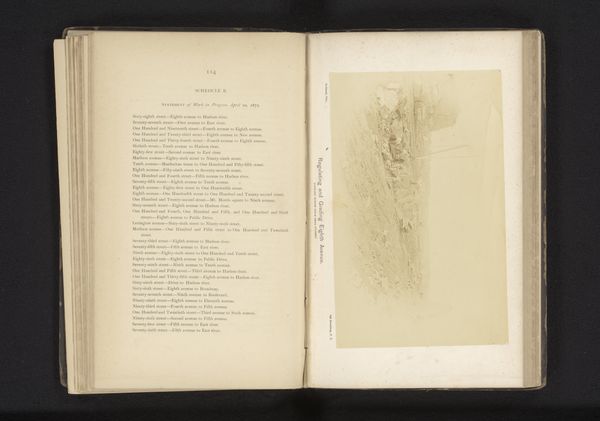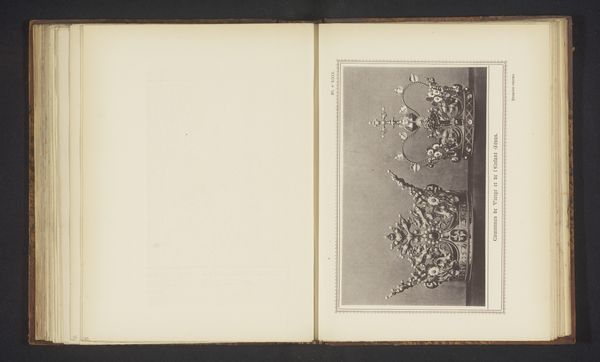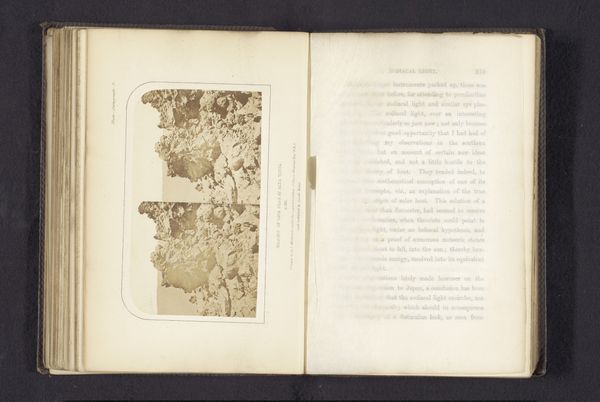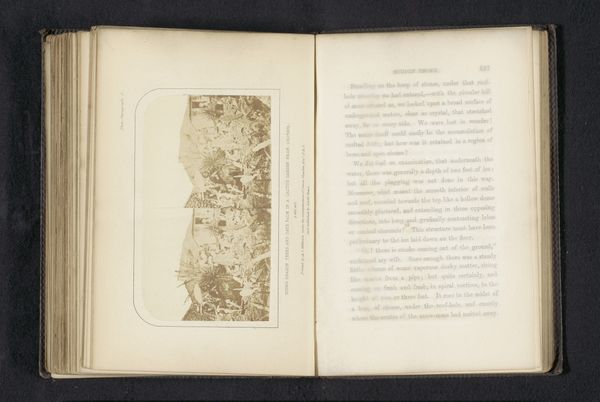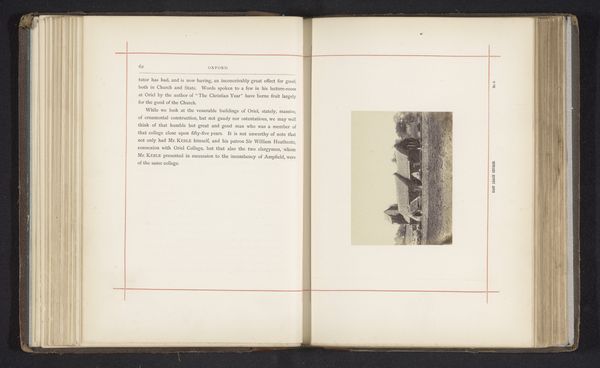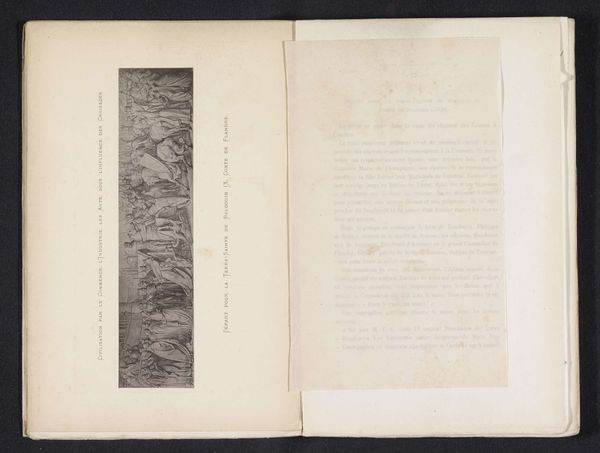
drawing, textile, paper, ink
#
drawing
#
art-nouveau
#
ink paper printed
#
landscape
#
textile
#
paper
#
ink
Dimensions: height 224 mm, width 281 mm, height 319 mm, width 408 mm
Copyright: Rijks Museum: Open Domain
Curator: Theo van Hoytema’s "Tekstblad met winterkoning op een paal," created in 1892 using ink on paper, strikes me with its quiet melancholy. The delicate linework depicting the winter wren seems almost secondary to the dominating block of text. What are your thoughts on how the materiality informs the work's meaning? Editor: Well, I noticed the printed element – almost like a page torn from a book, elevated to an artwork. The combination of the hand-drawn illustration with the text suggests a tension between mass production and individual artistry. I’m curious, though: what do you see as the primary function of the material elements within the context of Art Nouveau? Curator: The printing process allows for the widespread dissemination of art, aligning with the socialist underpinnings present in some strains of the Art Nouveau movement. Consider how William Morris, a key figure, aimed to democratize art by emphasizing craftsmanship and affordable design for the masses. This piece also blends typography with nature-based illustration. How does that tension affect its interpretation? Editor: It does seem to point to the relationship between nature and industry, which was key during that time! Is it possible the paper was manufactured in such a way to emphasize an element of the organic, blurring boundaries, which again connects to industry practices? Curator: Absolutely. Examining the paper itself, its texture and quality, could reveal information about its production, connecting the artwork to the specific labor and materials available at the time. How do you think this impacts its accessibility to its audience? Editor: I’m seeing now how deeply embedded this image is with the conditions of its making. It is a print, and that immediately informs its distribution and audience, not just what it means but *how* it means. Curator: Exactly. We've shifted our focus from the mere image to the socio-economic realities that shaped its creation and consumption. Editor: It really highlights the fact that every element of a work, from the ink to the paper, is infused with intention and historical context.
Comments
No comments
Be the first to comment and join the conversation on the ultimate creative platform.
